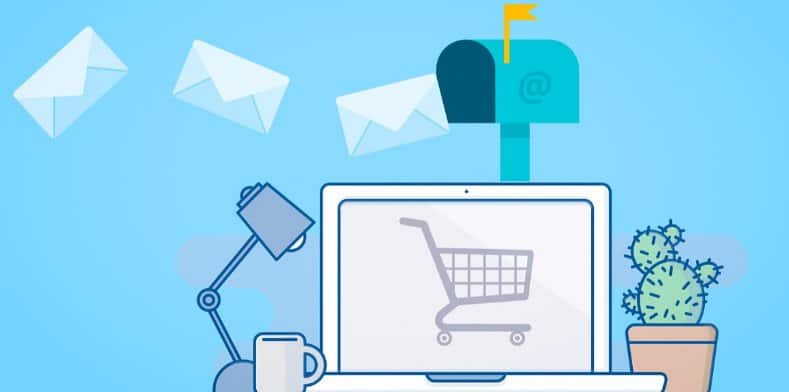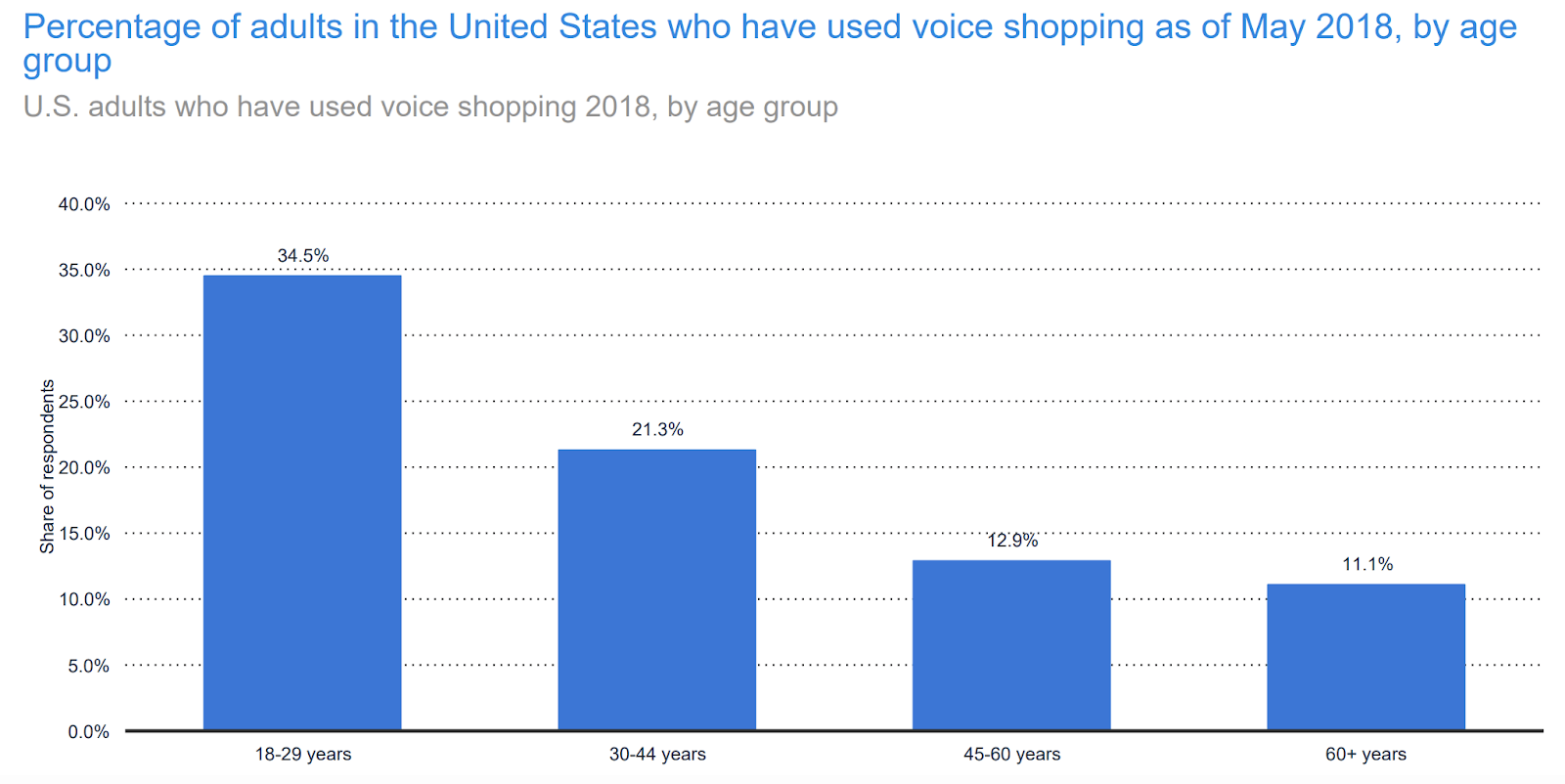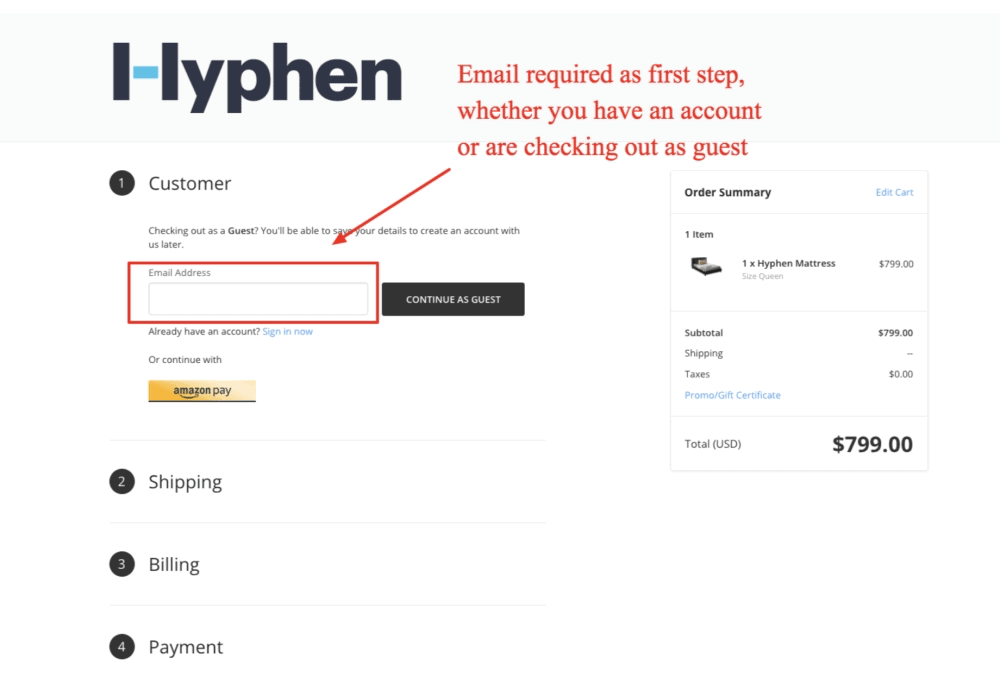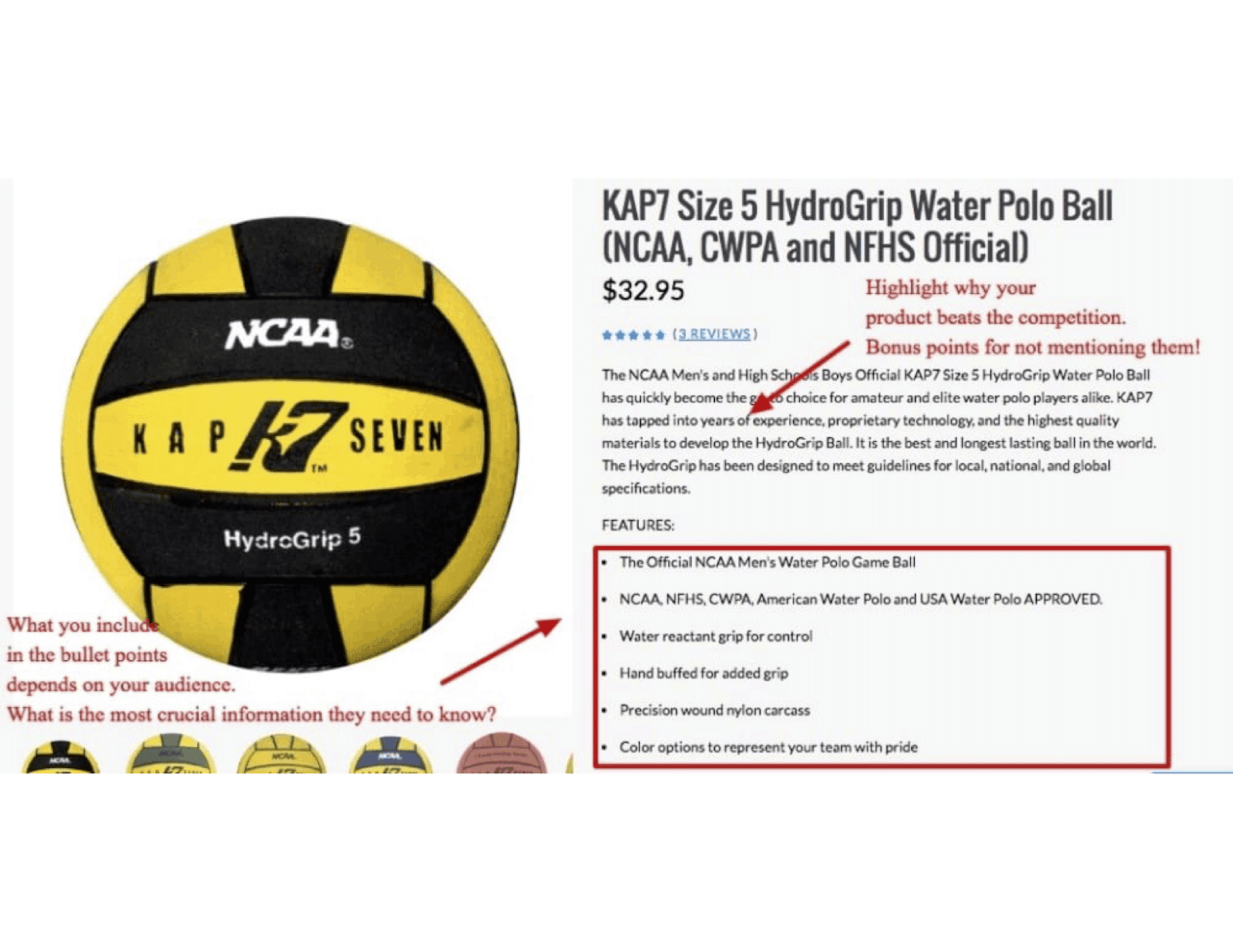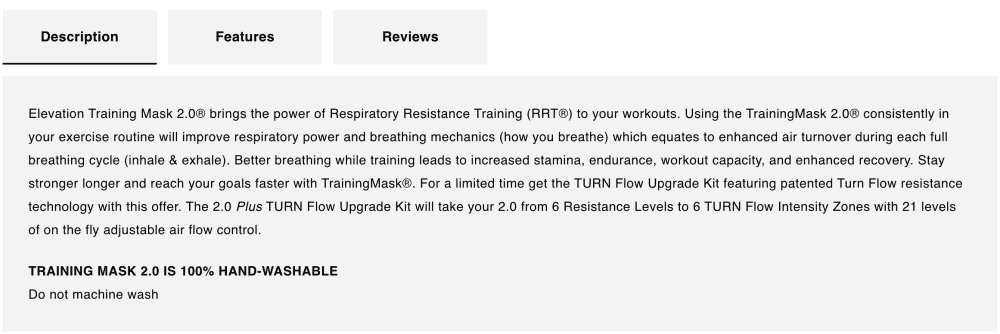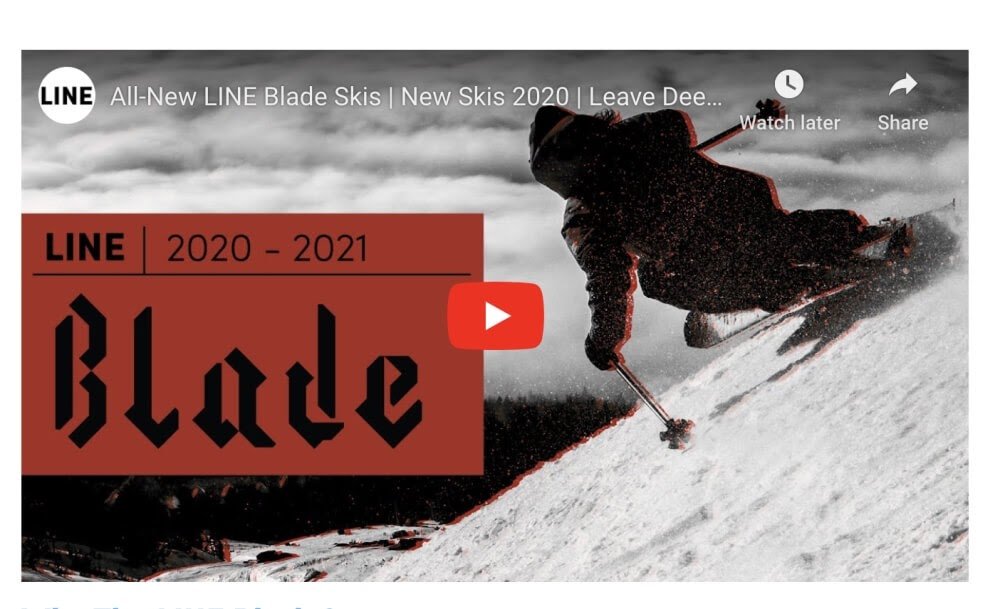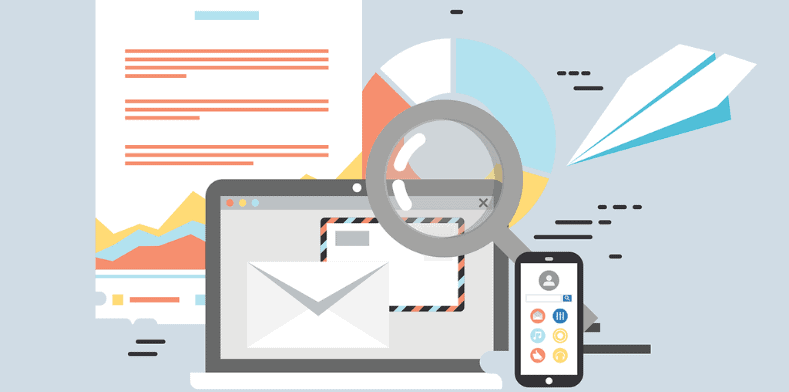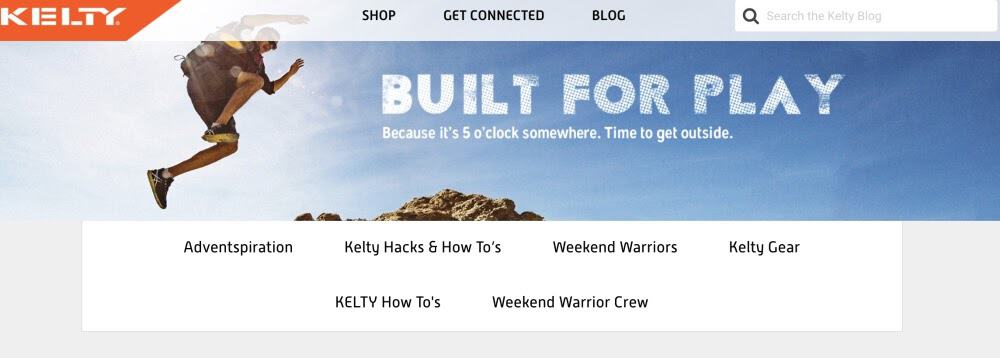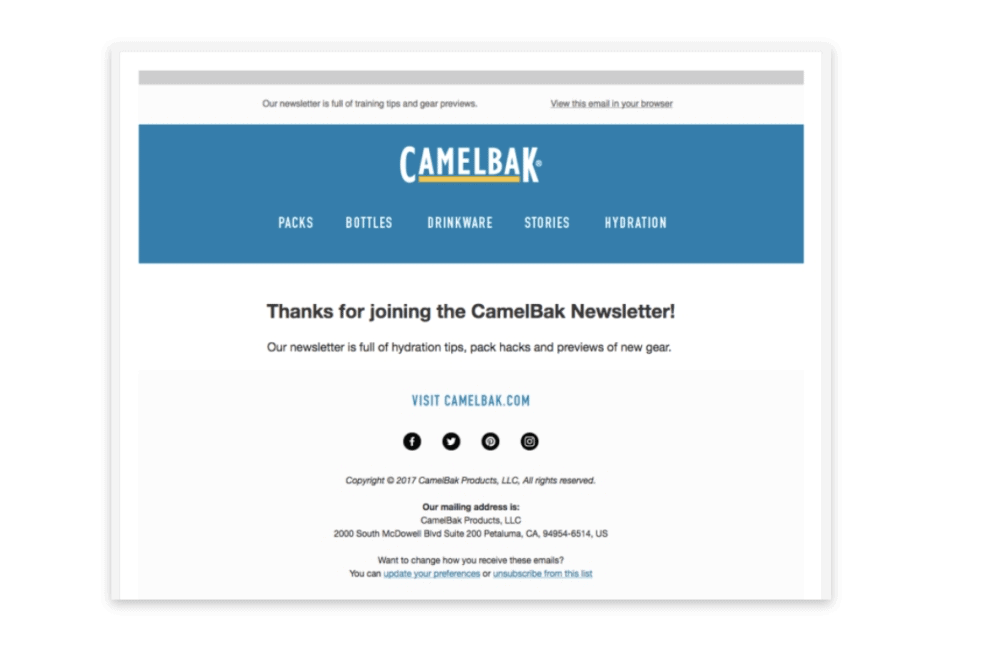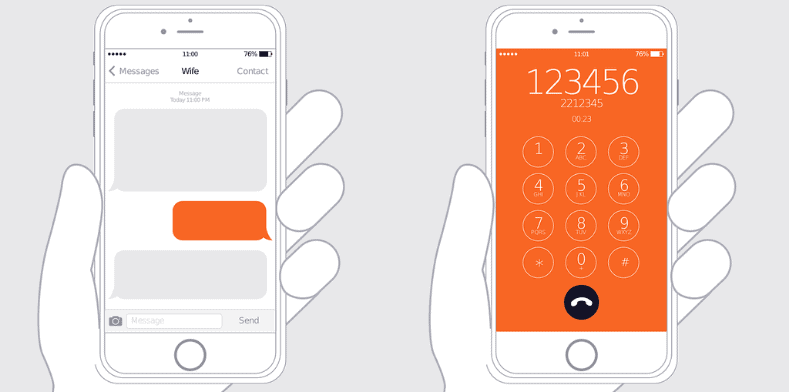Ecommerce has grown steadily over its nearly thirty years, and new technologies keep reducing the barriers to entry for brands who want to sell online.
But that means that competition has increased, too. It’s not just about whether you have a good product — you have to make sure that your target audience knows about you (brand awareness), knows why they should buy from you (your value propositions), and actually visits your site to convert.
None of that comes easily or happens overnight, but with a solid marketing plan, you can expand your reach and drive new (and returning) traffic to your store to grow your revenue and build customer loyalty.
Let’s take a look at 12 tactics you can use to build brand awareness and drive traffic and conversions.

1. Voice Commerce
Voice commerce is the act of using voice commands with a smart speaker like Google Home or Amazon Alexa. You conduct shopping activities such as searching for product information, comparing products, purchasing, reordering, returning products, and more. While the technology is still in its infancy and consumer adoption isn’t widespread, experts believe it will catch on, recommending marketers begin thinking about how to adapt to facilitate its use.
Benefits of using voice commerce.
The benefits of using voice commerce are that it’s faster to complete a purchase online, it’s hands-free and multitasker-friendly, and it’s easier to reorder frequently purchased products.
Be successful at voice commerce.
Because voice commerce hasn’t quite reached maturity yet, marketers are still experimenting with how to make the tech truly successful. Here are a few keys to making it work for you.
Understand your customers.
Are your products conducive to online voice ordering? Buying a product for the first time, especially products that consumers typically want to see before purchasing, can be a bit of a leap for customers at this point. You should also be sure your target audience even wants to use voice to shop. A survey from 2018 showed that the greatest percentage of voice commerce users (34.5%) were between the ages of 18–29; the percentages decreased across older age groups.
Source: Statista
Consider the entire customer experience.
Customers will interface with your brand via voice in a completely different way, so you’ll need to make sure that the experience is intuitive for them to use. Remember that it’s still important to keep your brand identity consistent across all channels, including voice.
Optimize your online store for voice search.
As mentioned above, customers will search differently using voice than when typing in keywords. Make sure to incorporate long-tail keywords in your product descriptions to better match customers’ natural language patterns.
2. Optimize Checkout Process
Checkout is where it all comes together — or falls apart. The checkout process refers to the ultimate moment of truth: when consumers confirm the products they want, then enter shipping and payment information.
Some of the biggest reasons for abandonment during the checkout process include:
- Surprise costs or higher-than-expected fees added at time of payment.
- Complex, multi-step process to check out.
- Limited shipping options or longer-than-expected delivery times.
- Lack of preferred payment options.
- Security concerns.
Optimize your checkout to reduce abandonment
All of the above factors introduce friction into the checkout process, but some of them can be addressed outside of the checkout process. For instance, take shipping times and fees: customers should have the chance to review related information and policies before they add goods to their cart.
Create a hassle free checkout process
Reducing friction in the checkout process is really about customers understanding what to expect, and you delivering on those expectations in a way that asks only as much of the customer as is truly required.
Show progress
Multi-page checkouts can frustrate customers, but all the more so if they don’t have an idea of when they might be finished. Let them know where they are in the process and how they’re progressing through the checkout steps so they have a clear expectation of what’s next.
Don’t require customers to register
Registration is an extra step that some customers won’t be ready to complete. If you require registration, you may lose the shoppers who want a quick checkout and aren’t ready to enter all the information required to make an account on a new website.
Capture buyer’s email address early in process
The sooner you have the buyer’s email address, the better. If a customer abandons the checkout process at some point after entering an email address, you can follow up with abandoned cart email campaigns to try to convince them to return to purchase.
3. Optimize product descriptions
Product descriptions are one of the most important pieces of your ecommerce site and can make or break your ability to make a sale.
Why optimize a product description?
First of all, product descriptions that are optimized for SEO will get more high-intent traffic. Once shoppers are on your site, descriptions must give them all the information they need to know if the product will meet their needs.
Descriptions affect search impressions
Identify the most common search terms used to find each of your products. Then, you can focus on ranking for them in Google search results. Stick to the common product terms used by your target audience to ensure findability.
Descriptions set expectations
Online, your product description has to replace the in-store experience — so you want it to be as complete and specific as possible. (This will also help you reduce returns based on products not being as expected.)
Make your descriptions the best
For each product, there are lots of things to think about. They include your target customer, basic product details, when and where a customer might use it, why yours is better than your competitors’, and how the product works.
Once you understand those details, draft a paragraph or two about the product. You want this part to be a little bit creative and to showcase your brand voice. Below the paragraph, include short, scannable bullet points for specific product specs/features and other concrete, factual information or relevant technical information.
4. Social Media Advertising
Social media advertising is — you guessed it — advertising that happens on social media platforms. Social networks are a great place to meet your target audience and expand your reach.
Best social networks for ecommerce advertising
There are a lot of different social networks out there. There are some, though, that are focused on niche audiences or communities, and others that haven’t gained much widespread traction in the market. If you’re just getting started in social media advertising, start with these major players.
Facebook is the most popular and widely used social networking platform, and that makes it a great place for most businesses to start advertising.
- Number of active users: 2.5 billion.
- Advantages: Robust audience targeting features.
- Best for: Targeting just about any audience that isn’t Gen Z.
Instagram is another widespread social platform, and it utilizes Facebook’s data for high-precision targeting. That makes Instagram ads a great compliment to Facebook campaigns for some businesses.
- Number of active users: 1 billion.
- Advantages: Robust audience targeting features; Shop Now buttons and in-app checkout.
- Best for: Brands with very visual products, like apparel, accessories, and home goods.
Twitter has a more specific demographic than Facebook and Instagram but is still widely used. If you decide to try out Twitter, make sure you include an attention-grabbing photo or short video. Otherwise, users might skim right past your ad without even seeing it.
- Number of monetizable active users: 145 million
- Advantages: Target based on keywords, engagement with tweets, and followers.
- Best for: Reaching the young and college educated.
Pinterest serves ads based on what users have searched for or viewed in the past. It’s more likely that your ads will be viewed by a high-intent audience.
- Number of active monthly users: 335 million
- Advantages: Target based on keywords, engagement with tweets, and followers.
- Best for: Reaching women; expanding internationally.
LinkedIn, like Pinterest, has a narrower user demographic: 71% of LinkedIn users are between the ages of 36 and 55.
- Number of users: 58.5 million
- Advantages: Best social network to reach a business-oriented audience.
- Best for: B2B businesses or anything related to higher education and professional development.
Snapchat
Snapchat is one of the newest social media platforms to gain real traction. The biggest detractor from advertising on Snapchat is the high cost.
- Number of daily users worldwide: 203 million.
- Advantages: Concentrated access to younger consumers.
- Best for: Large budgets.
5. Video Marketing
Videos can increase user engagement with your website, and hosting them on YouTube can also help to improve your Google search rankings. The most common use for videos by ecommerce firms is product videos.
Source
Benefits of video marketing.
Videos can show so much more than still photos, whether it’s finer product detail, functionality, or your brand story. They give customers a better sense of how they’ll experience the product in person. In fact, 94% of video marketers believe that videos have increased user understanding of their product or service.
People love videos
In a recent survey, 87% of respondents said they would like to see brands create more video content. Explainer videos and product videos make up some of the top video content types in which they expressed interest.
Videos bring conversions
Helping customers understand more about a product or service will make them more comfortable in purchasing. In this way, good product videos will help increase your conversion rate — and hopefully decrease returns as well.
Google prefers videos
In reality, YouTube isn’t just a social video platform — it’s a search engine. And, since it’s owned by Google, it’s got the power of the most popular search engine behind it. A video strategy using targeted keywords can help increase your organic exposure.
Adding video marketing into the mix.
Video is a big investment — it can be pricey to hire a videographer or agency, and there’s the time it takes, too. But the return on that investment is worth it if you go in with a plan, clear goals, targeted keywords, and valuable content.
Product tutorials
Video product tutorials can help your customers understand how to use your product or service before or after they purchase. Some people will want to see how it works to determine if it’s the right product for them. Others will want to reference the tutorials later.
Product reviews and testimonials
Social proof is important to buyers and can be a deciding factor if customers are comparing two similar products from you and a competitor. Product reviews and testimonials on video provide that social proof in an engaging and authentic way.
Story-based videos
Human beings are wired for stories. Story-driven videos can help increase brand affinity — but remember not to look inward all the time. Tales of customer success are a great way to tell your brand story through your customers’ eyes. They’ll be more interesting and more relatable to your target audience.
6. Social Media Marketing
If you’re looking to engage with your customers and expand your brand reach, look no further than social media. Social media has become ubiquitous among Americans and across the globe. As well as the social media advertising mentioned earlier, you must also build your overall social presence.
Make the most out of your social media.
Being on social media isn’t enough. You have to produce great content. Consumers are inundated with messages from brands. If yours doesn’t stand out, it will be lost in the scroll.
Provide customers with value
It’s not always easy to separate the signal from the noise on social media. If your content provides customers with unique value, it’ll have a better chance of rising above the rest.
Optimize your posts
Use targeted, relevant keywords in your social posts, just as you would for pages on your website. If users are searching high-intent keywords, you want to make sure you’re showing up in the results.
Share reviews
Social proof! When your customers say good things about you, it’s okay to brag. Let consumers know that other people like your brand and your product. It’ll also help to build your relationships with your biggest advocates.
Interact with followers
Social media is a two-way street. If you’re just using it as a megaphone to blare messages, you’re using it wrong. Make sure you’re interacting with followers and fans so they feel they have a reason to stick around.
Build relationships with influencers
Influencer marketing has grown significantly in the past few years, and it’s a great way for some brands to extend their reach into new audiences. It’s not right for everyone, but if it works for your business, use social media to your advantage and build those relationships.
7. Email Marketing
Email marketing is one of the highest converting marketing channels in ecommerce. That means it remains a critical strategy to incorporate in your marketing plan. Keep iterating on that strategy, because making constant improvements based on performance data can keep your brand growing steadily.
Tactics for having a successful email marketing strategy.
Getting your brand in front of customers and prospects is critical, but it’s an opportunity you can easily lose in just one click. Make the most of having this captive audience to provide regular touchpoints and increase conversions.
Build a well-rounded email list
Keep growing your email list by giving shoppers an incentive to provide their information. Use a field on the homepage or use a pop-up to provide shoppers with an offer in exchange for their email address.
Use A/B subject line testing
If your customers aren’t opening your emails just because they’re from you, then the subject line is perhaps the most important thing they’ll see. A/B test your subject lines to find the ones customers respond to best. Then, apply your discoveries across your email programs to increase your open rate.
Send abandoned cart emails
Emails prompting shoppers to return to the shopping carts that they abandoned can be incredibly effective in promoting conversion. You don’t have to start by offering a discount — sometimes a reminder can be enough.
Utilize email automation
Once you have a solid email strategy developed, use email automation to execute without the stress. While email may be easy enough to handle when your business is small, automation will be necessary to support significant scaling.
8. Personalization
Personalization is big in ecommerce right now. It refers to anything that customizes certain content or paths of action to a specific customer or group of customers. Some examples across the spectrum include personalizing emails (e.g., “Dear [Name],” instead of “Hi there”) or delivering product recommendations based on past purchases.
Why integrate personalization?
Personalization creates better customer experiences by providing a touch of personal service. It also increases conversions by helping to guide shoppers to the products and services that are best for them.
Personalization tactics.
Make your customers feel like their experience on your website was built just for them. Here are a few tactics to consider in incorporating personalization into your marketing strategy.
Personalized content
Personalized, or dynamic, content is material that is targeted to a specific customer or customer cohort based on some predetermined criteria. Those criteria may be around a unique customer’s particular interests or the kinds of content that convert the best with a particular customer cohort.
Adjust navigation to visitors’ interests
If you know what products a customer is most interested in, serve up the navigation they need to get where they want to go fast. Reducing the number of steps to find desired products can be beneficial to user experience and conversion.
Use geo-location tagging
Responding in some way to a shopper’s location can help create a tailored experience. One method is to use that information to provide estimated shipping costs before shoppers ever even get to the checkout page.
9. Generate blog content
If your content strategy doesn’t yet include a blog, consider if it would be right for your business. Let’s look at some of the benefits and break down some best practices.
What are the benefits of content for ecommerce?
Content can give your brand the chance to better showcase products, serve as a resource to your target audience, and tell your brand story.
Things needn’t be complicated. Brilliant, distinctive use of colour that complements the product. So well organised, so easy to get what we want.
Improves engagement rate
If your blog adds value, customers will come back to visit, even if they’re not buying at the moment. An engaging blog will increase return visits and time spent on site.
Improves SEO
A successful blog gives you more opportunities to rank for specific keywords, and as you publish more content, your domain authority will improve. This naturally boosts your rankings in Google search results.
Builds a better relationship with customers
As we mentioned, a good content strategy focuses on adding value to your customers. If they see you as a trusted resource, this will improve their perception of you and increase the likelihood that they’ll purchase from you in the future.
Best practices for creating ecommerce content.
Content on your ecommerce site should be visually rich and customer-centric. This content is for customers, so build it with your audience in mind.
Vary your content types
While there are clear trends in which groups like which types of content, it’s still a good idea to provide information across a couple of different formats. Some of the formats you can consider include blog posts, images, video, infographics, and user-generated content.
Leverage visual content
Visual content receives higher engagement than written content, and puts customers right in the middle of the action. This is where some of your strongest brand messages will come through.
CTAs should be centered on shopping
Content should add value outside of your own brand, but use your calls to action to redirect shoppers into purchasing behaviors.
Use user-generated content
User-generated content (UGC) is a great way to source material, provide social proof, and build community all at once. Good relationships with your brand advocates will help the UGC start rolling in, and continued connection will expand your reach.
10. Integrate Marketing Automation
Marketing automation refers to tech that helps automate parts of your marketing strategy. The aim is to save time, improve use of data, and effectively connect with consumers.
Why marketing automation makes sense
The relationships you build with your customers is important to the success of your brand. Using marketing automation can help you do that more effectively, in less time.
Better customer insights
Marketing automation can help you better segment your customers and tailor your messages to them based on their needs and interests.
Lead nurturing
Relevant content can keep your business top-of-mind with customers, even if they haven’t visited you in a while. Make sure to keep the lines of communication open. Automation can help you do that without a lot of extra time and energy on the frontend, once you have a set strategy.
Omnichannel monitoring
Pair automation technology with social listening so you can hear what customers are saying about you across channels. Use that information to further tailor your messages and reach them in the right place, at the right time.
Best practices for marketing automation
If you’re just implementing marketing automation for the first time, you can start small and still have a big impact. Here are some tactics where you can focus your efforts for high ROI.
Welcome email series
Your welcome email series will be the first touchpoint with your shopper after they sign up to receive updates from you. Make sure it reinforces your brand story and the benefits you provide, and make it feel personal. You don’t get a second chance to make a first impression.
Source
Email list segmentation based on purchase behaviors
Segment your list of subscribers based on purchase behaviors so you can craft more tailored messages to each cohort. For example, you may want to give your VIP customers a special discount, or offer a new promotion to shoppers who haven’t yet made a purchase.
Reach out to less engaged customers
Customers have a lot on their minds. If they disappear from your store for a little while, maybe it’s time to give them a nudge. Sometimes a promotion to these customers will encourage them to shop again and put you top-of-mind.
11. Retargeting
Retargeting is a strategy for paid marketing that serves your ads to users who have already engaged with your brand. Using retargeting means that your ads are being seen by people with higher purchase intent because they have already interacted with your brand.
Types of retargeting for your ecommerce store.
You can set up retargeting campaigns based on information and interactions on several different platforms. Here are a few examples:
CRM retargeting
This refers to targeting people already in your customer relationship management (CRM) system. Retargeting systems can use the customer data you have to target display ads specifically to them as they browse the web.
Email retargeting
For email, there is a code you can add to the HTML that gives you the opportunity to target anyone who has opened an email from your brand.
Search retargeting
Using search retargeting, you can target users based on the keywords they use in their online searches.
12. Implement an SMS Marketing Campaign
SMS marketing is marketing through text messages. Consumers spend a lot of time on their phones, so open rates are typically very high for these types of messages. That said, be mindful of the interruption — are you sure your customers want to receive text messages from you?
Benefits of using SMS for your online store.
One of the benefits of SMS marketing is that it’s super fast. You can draft a quick text message and have it distributed to subscribers in minutes, with immediate delivery. And, as mentioned before, open rates are high for SMS, as is response rate.
Tactics for implementing SMS.
The first and most important thing to remember about SMS marketing is that customers must opt in to receiving text messages. Sending customers a surprise marketing message as a text could be jarring and unwelcome for some.
Drive post-purchase reviews.
Use text messages to solicit reviews from customers who have purchased your products recently.
Promote sales and special offers.
Got a flash sale? SMS marketing is a great way to let your customers know! The quick delivery enabled by text messages opens a lot of quick-sale opportunities that you can let your shoppers in on in a flash.
Another form of customer service.
Deliver customer service via text message if you can. SMS customer support is growing in popularity to facilitate rapid, asynchronous communication.
Conclusion
With so many options on where to allocate your time, money, and energy, it can be a challenge to determine your best plan of action. Hopefully, this list of different marketing tactics will help you evaluate what your business needs most and decide where to focus.
BigCommerce is a software-as-a-service platform that simplifies the creation of beautiful and engaging online stores by delivering a unique combination of ease of use, enterprise functionality and flexibility, empowering businesses to turn digital transformation into a competitive advantage.

